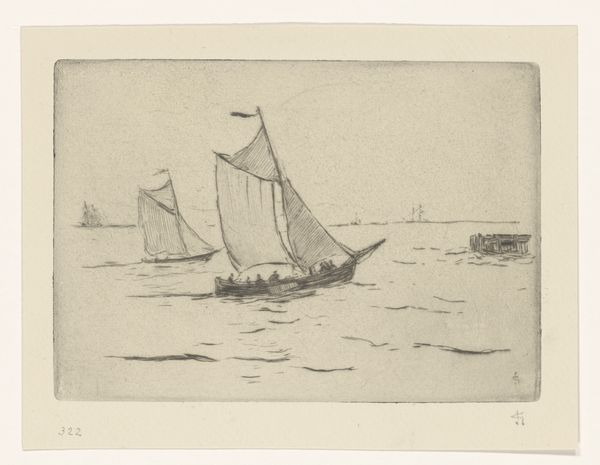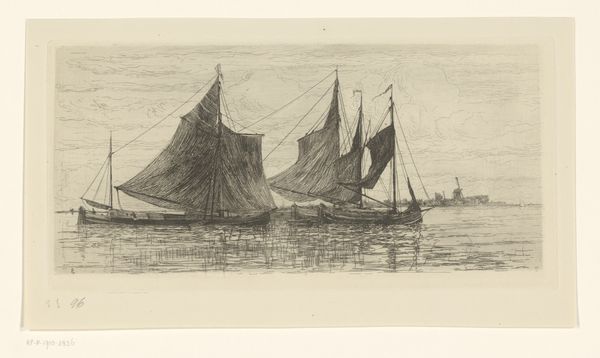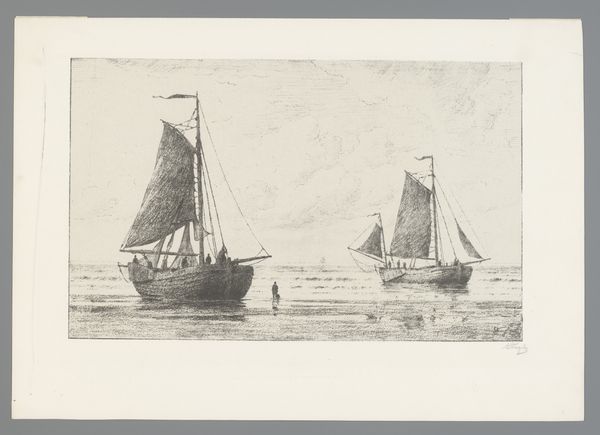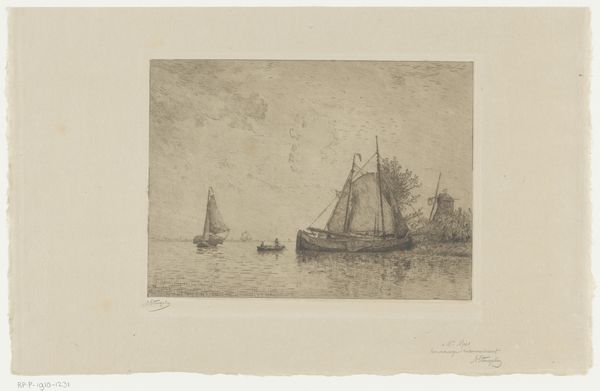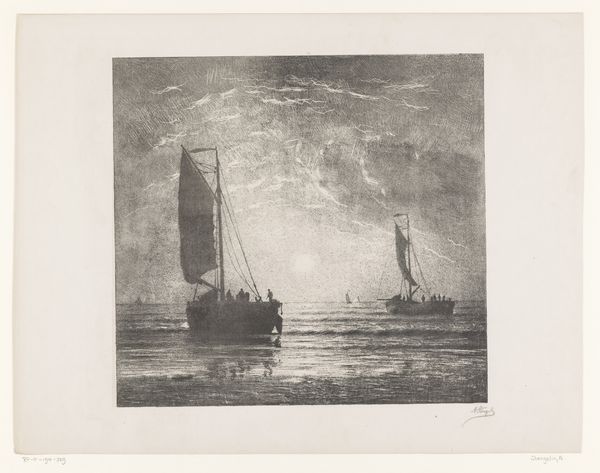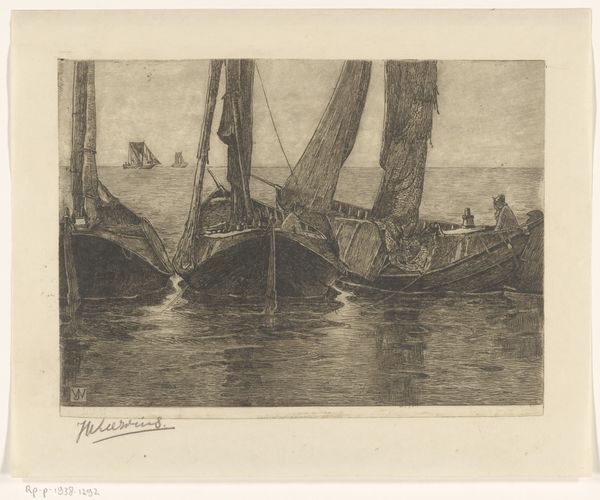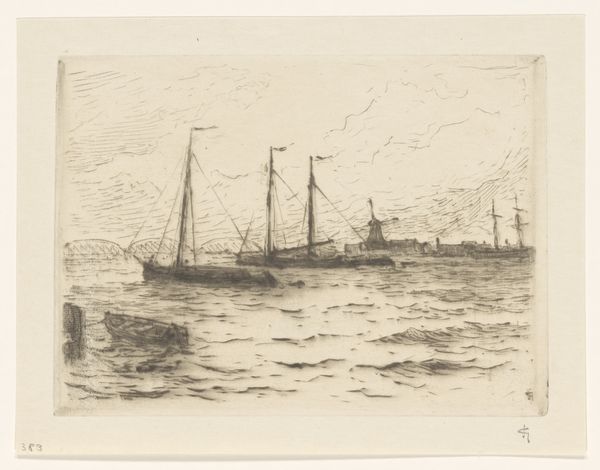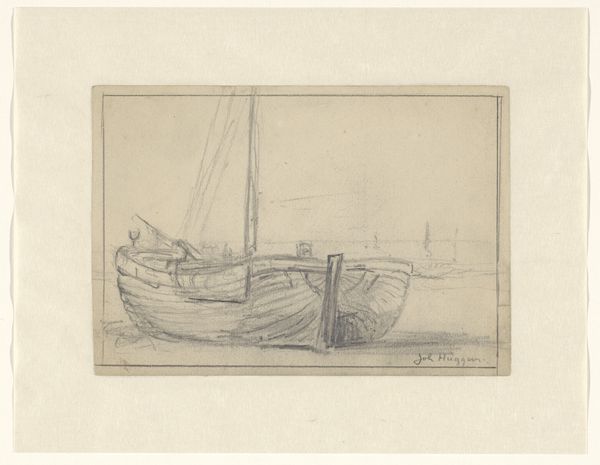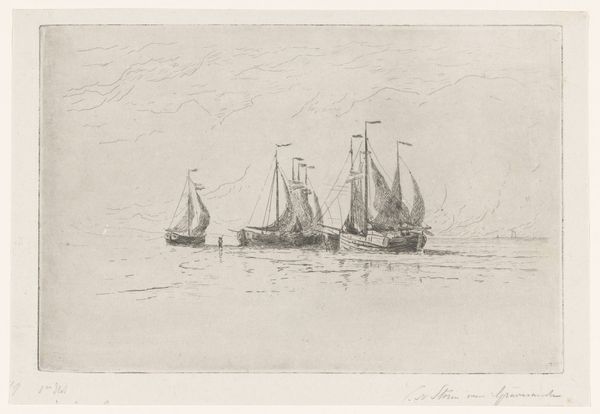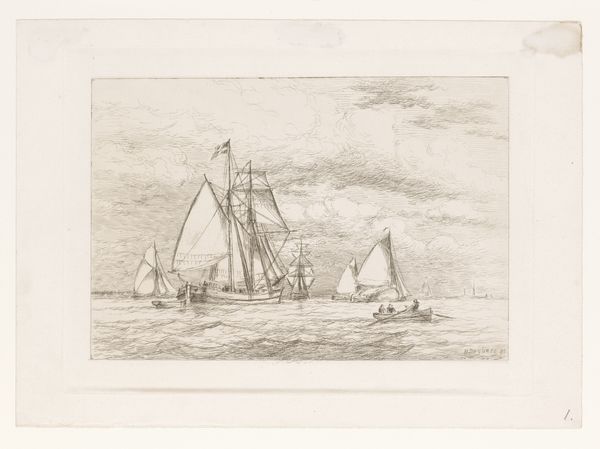
print, etching
#
boat
#
dutch-golden-age
# print
#
etching
#
landscape
#
river
#
realism
Dimensions: height 108 mm, width 165 mm
Copyright: Rijks Museum: Open Domain
Curator: Here we have Carel Nicolaas Storm van 's-Gravesande's etching from 1870-71, titled "Boot op de Adour," or "Boat on the Adour." Editor: My initial impression is one of stillness, even melancholy. The monochrome palette and quiet composition create a very subdued mood. Curator: Indeed. Note the artist's expert handling of line and texture, particularly in the reflection of the boat on the water's surface. It exemplifies his remarkable talent with the etching needle. Look closely at the varying densities of lines and how they shape our perception of light and shadow. Editor: But that stillness could be deceptive. This image was produced shortly after the Franco-Prussian War, which impacted the Netherlands profoundly. The placid scene might, perhaps, mask a sense of uncertainty about the future, a longing for peace. Notice the background; a faint depiction of buildings clustered on the bank opposite hints at a larger town. Curator: An intriguing reading. One could argue, however, that 's-Gravesande was more concerned with purely formal elements. His devotion to Dutch Golden Age landscape traditions placed emphasis on the visual interplay of line and form. It's hard to overlook his debt to earlier Dutch masters like Rembrandt in his creation of atmospheric light. Editor: That earlier context, while important, doesn't negate a contemporary reading. For whom was this image created? How did class and societal changes affect the interpretation of landscapes? The solitary figures on the boat prompt one to consider histories of labor, mobility, and perhaps even migration within the specific context of the Adour region. Curator: I see your point about accessibility, yet one must appreciate the skill in translating three dimensions into two, playing with focus, using tonal variations to create a sense of depth. These technical aspects make the artwork fascinating in its own right. Editor: Perhaps both are intertwined. The skill and the composition could reflect not just artistic talent but a specific cultural outlook rooted in a period of intense transition and social re-evaluation. Thank you for helping me explore that perspective. Curator: The pleasure was mine; it’s always interesting to delve into how we might better view and understand a given object and period.
Comments
No comments
Be the first to comment and join the conversation on the ultimate creative platform.

